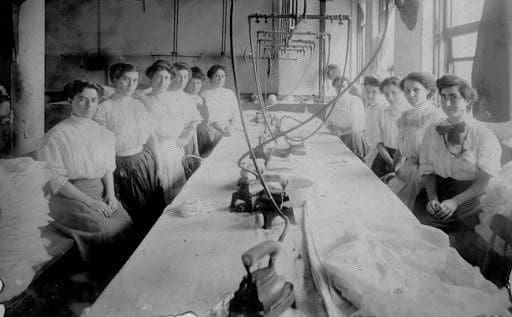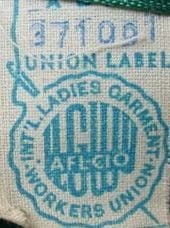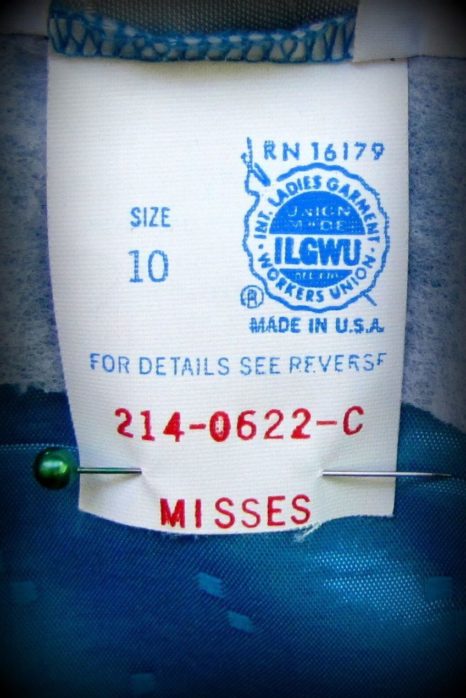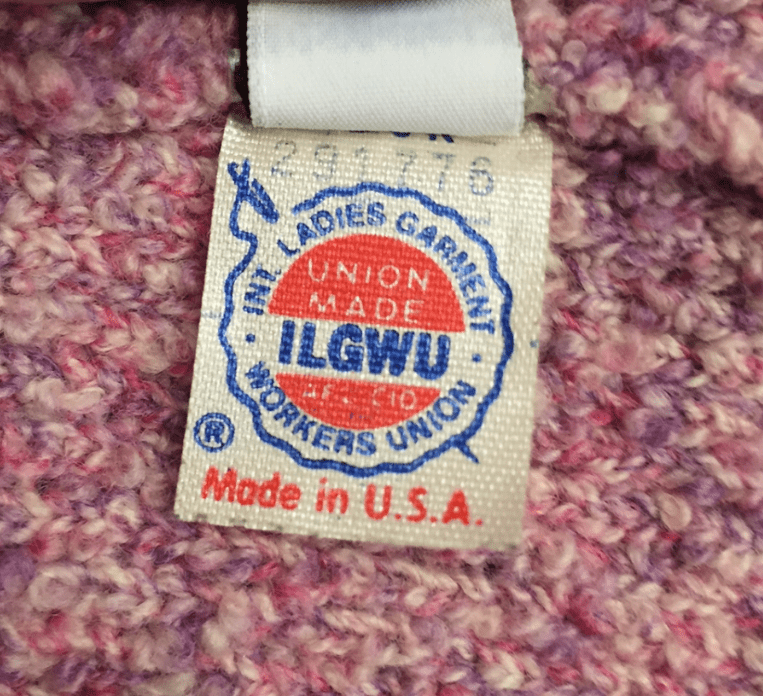If you frequent vintage shops or collect vintage garments, odds are you’ve come across a piece or two with an ILGWU tag, otherwise known as the International Ladies Garment Workers Union. Not only does this union have an interesting history, but if you’re a vintage garment junkie, you’ll also enjoy learning how to date a piece by examining the tag.
A Union is Born
The ILGWU was once one of the largest labor unions in the United States, and one of the first unions to consist primarily of female members. The union was founded by several other local unions on June 3rd, 1900 in New York City and represented major garment centers in cities such as New York, Philadelphia, Baltimore, and Newark. Most of the members were Jewish immigrants who had already been active unionists in other countries before coming to America.

Garment workers in a factory, 1900. (source)
Union members worked to improve working conditions within cities. During the union’s early years there were many protests; while some ended in defeat, many ended in a victory that included limiting the workweek to 50 hours and providing materials and proper equipment to workers.
Fire Stokes Reform
In March of 1911, a major tragedy turned into a victory for the ILGWU when a triangle shirtwaist factory in New York City burned down. This fire claimed the lives of 146 women and men who were unable to escape the deadly flames from inside a locked building with broken fire escapes and lack of fire-fighting equipment. The ILGWU stepped in and reached an agreement with the government that workplaces required inspections and regulations.
 Triangle Shirtwaist Factory Fire building remains, 1911. (source)
Triangle Shirtwaist Factory Fire building remains, 1911. (source)
In addition to bettering the workplace, the ILGWU also began establishing better healthcare and education systems as well as housing, arts, and recreational programs. Bettering women’s healthcare was a top priority since tuberculosis and respiratory issues were common among women who worked in factories with poor ventilation systems.
Throughout the 1960s and 70s, the Union began running into issues as they tried to expand and remain inclusive. They eventually merged with the Amalgamated Clothing and Textile Workers Union in 1995, creating UNITE.
Dating an ILGWU Garment
Fast forward to today. You’re out and about scouring your favorite local vintage shop and come across an ILGWU tag; obviously, happiness will be the first emotion to consume you since you’re holding an actual piece of history, but your next question may be: when was this made? Well, lucky for you, the ILGWU changed their tag style many times, which means that you can date garments by investigating the tag.
Mid 1950s – Early 1960s
This tag will have a crest with scalloped edges going all the way around, with a needle and thread behind the crest. This design didn’t exist until the 1950s, so if you spot a tag from Union or ILGWU that doesn’t look remotely close to this, it’s safe to assume you’re holding a garment that dates back before the 1950s—lucky you!

(source)
Mid 1960s – Early 1970s
This tag will look very similar to the old model, with the same scalloped crest in front of a needle and thread, but you’ll notice the circle now reads “Union Made” with ILGWU just below it.
 (source)
(source)
Mid 1970s – 1995
Dating this tag is pretty simple: it’s the same logo as before, just in a bold red, white, and blue.
 (source)
(source)
The next time you’re scanning tags at a vintage shop, you’ll not only know how to date the ILGWU garment you’ve discovered, but you’ll also know that that particular piece was manufactured by someone who devoted their time and efforts to create a safe and just working environment for all people.
Sources: Cornell University, Wiki.







This historic information is so interesting to me since I love everything surrounding women’s fashion, fabrics,fabric art, etc. This is a new adventure for me.
Thank you
Nedia Rooker